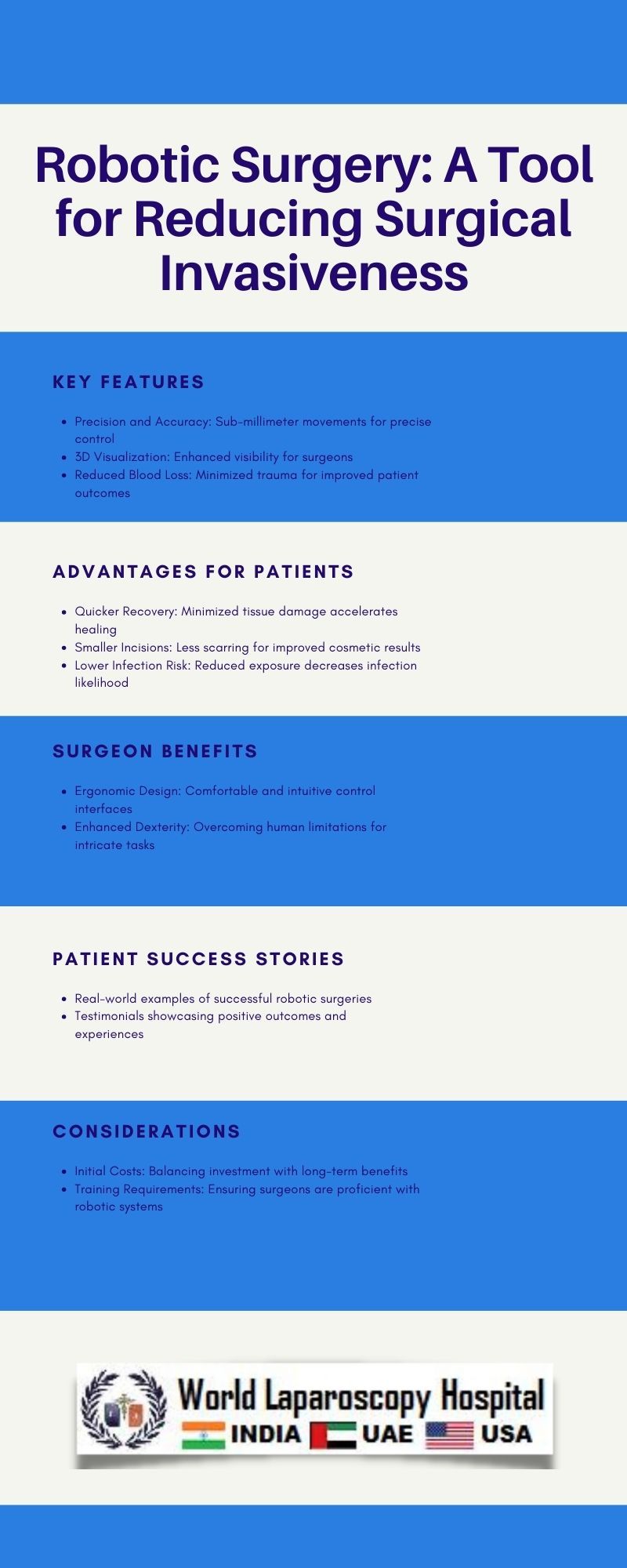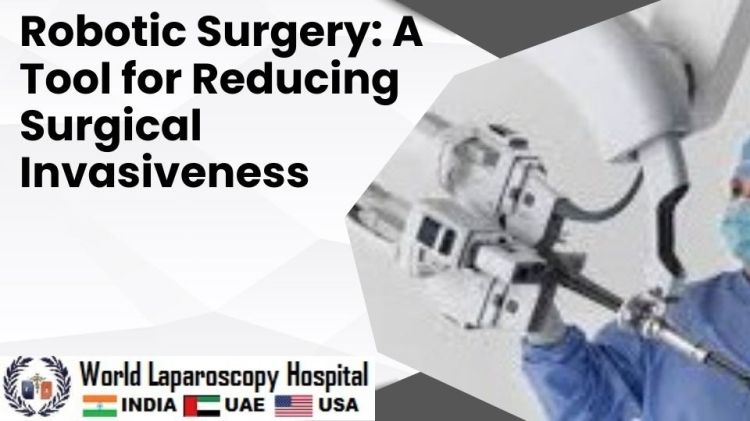Robotic Surgery: A Tool for Reducing Surgical Invasiveness
Introduction:
In the realm of modern medicine, technological advancements continually shape the landscape of healthcare delivery. Robotic surgery stands out as a groundbreaking tool that has revolutionized surgical procedures, offering unparalleled precision and reducing invasiveness. This article delves into the intricacies of robotic surgery, exploring its evolution, applications, benefits, challenges, and the transformative impact it has on the field of surgery.

Evolution of Robotic Surgery:
The roots of robotic surgery can be traced back to the early 1980s when the concept emerged as a means to augment surgical capabilities. The first robotic-assisted surgery took place in 1985, marking a significant milestone. However, it wasn't until the late 1990s that the da Vinci Surgical System, developed by Intuitive Surgical, gained FDA approval and paved the way for widespread adoption.
The da Vinci Surgical System:
The da Vinci Surgical System, a robotic platform designed to facilitate minimally invasive surgery, has become synonymous with robotic-assisted procedures. This system consists of a console where the surgeon sits, master controls, robotic arms, and a high-definition 3D vision system. The surgeon manipulates the robotic arms using master controls, translating their hand movements into precise, scaled actions by the robotic instruments.
Applications of Robotic Surgery:
Robotic surgery finds application across various medical specialties, ranging from general surgery to highly specialized fields. In urology, the system is commonly used for prostatectomies and kidney surgeries. In gynecology, procedures such as hysterectomies are performed with increased precision. Cardiothoracic surgeons employ robotic assistance for complex heart surgeries, while in the field of orthopedics, it aids in joint replacements.
Benefits of Robotic Surgery:
Precision and Accuracy:
Robotic surgery allows for enhanced precision, as the robotic arms can make movements with a range of motion beyond the human hand. The system also filters out any tremors, ensuring steady and accurate maneuvers. This precision is particularly crucial in delicate procedures, such as neurosurgery and microsurgery.
Minimally Invasive Approach:
One of the primary advantages of robotic surgery is its ability to enable minimally invasive procedures. Traditional open surgeries often involve large incisions, leading to more significant trauma and longer recovery times. Robotic surgery, with its smaller incisions, reduces tissue damage, postoperative pain, and promotes faster recovery.
3D Visualization:
The high-definition 3D vision system provides surgeons with a detailed and magnified view of the surgical site. This enhanced visualization allows for better navigation through complex anatomical structures, improving the surgeon's ability to identify and address issues during the procedure.
Reduced Blood Loss:
The precision afforded by robotic surgery contributes to reduced blood loss during procedures. This is particularly beneficial in surgeries where excessive bleeding is a concern, such as liver resections or certain cardiac procedures.
Quicker Recovery Times:
Patients undergoing robotic-assisted surgeries often experience shorter hospital stays and quicker recovery times compared to traditional open procedures. The minimally invasive approach, coupled with reduced trauma to surrounding tissues, contributes to a faster return to normal activities.
Challenges and Criticisms:
While robotic surgery has garnered widespread acclaim, it is not without its challenges and criticisms. One major concern is the cost associated with acquiring and maintaining robotic systems, which can be a significant financial burden for healthcare institutions. Additionally, there is a learning curve for surgeons to become proficient in using the technology, and not all procedures are suitable for robotic assistance.
Critics also argue that the benefits of robotic surgery, particularly in terms of improved outcomes, are not universally proven across all procedures. Some studies suggest that outcomes for certain surgeries may be comparable between robotic and traditional approaches, raising questions about the cost-effectiveness of widespread robotic adoption.
Furthermore, the lack of tactile feedback in robotic surgery is a limitation. Surgeons rely on visual and auditory cues, but the absence of direct touch sensation can make it challenging to assess tissue characteristics accurately.
Future Directions and Technological Advancements:
Despite the challenges, the field of robotic surgery continues to evolve with ongoing research and technological advancements. Future developments may address current limitations and expand the applications of robotic systems. Miniaturization of robotic instruments, improved haptic feedback, and the integration of artificial intelligence are areas of active exploration.
Researchers are also exploring the potential of telesurgery, where a surgeon can perform a procedure remotely using robotic systems. This could revolutionize healthcare delivery in remote or underserved areas, providing access to specialized surgical expertise.
Ethical Considerations:
As robotic surgery becomes more prevalent, ethical considerations come to the forefront. Issues such as patient consent, data security, and the potential for job displacement in the surgical workforce warrant careful examination. Ensuring that patients fully understand the implications and potential risks of robotic-assisted procedures is essential for ethical practice.
Conclusion:
Robotic surgery has emerged as a transformative tool in the realm of surgery, offering unprecedented precision and enabling minimally invasive approaches. Despite challenges and ongoing debates, its impact on patient outcomes, reduced invasiveness, and quicker recovery times cannot be understated. As technology continues to advance, the future holds promise for further innovations that may shape the landscape of surgical practice and healthcare delivery. Robotic surgery stands as a testament to the ever-evolving relationship between technology and medicine, pushing the boundaries of what is possible in the pursuit of improved patient care.
